‘A shiny mark of incorruptibility’
Elmer Irey, leader of the T-Men, left a legacy of law enforcement integrity and leadership
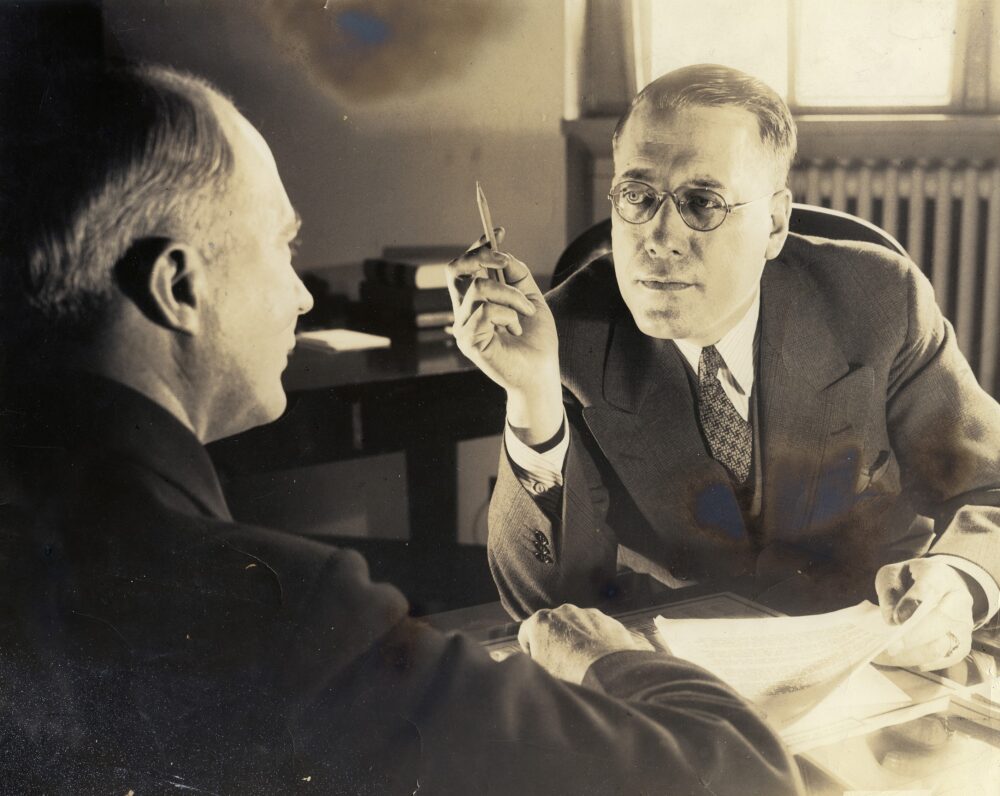
Good stories usually have five key elements: a likable protagonist who selflessly rises to the occasion; a malevolent antagonist seeking to oppress others; an impactful event that sets the characters in motion; a conflict that creates seemingly insurmountable challenges; and a climactic resolution so pleasing it serves to inspire us. This is the stuff of blockbuster movies. When all five elements are encapsulated in the events of a real person’s life, then you have a great story. Such is the case with Elmer Lincoln Irey.
The likable protagonist
Irey was the first chief of the Intelligence Unit, a law enforcement branch of the U.S. Treasury Department created in 1919 to attack the growing problem of tax evasion after World War I. Income tax rates had been significantly hiked to help pay for the mounting debts incurred during the Great War. But those of an unpatriotic ilk did not want to hand over larger portions of their income. Irey assembled and oversaw a band of investigators to tediously follow the money and build criminal tax evasion cases against the nation’s biggest tax dodgers. Irey’s Intelligence Unit later was commonly referred to as the “T-Men” to differentiate his agents from the famed “G-Men” of the Federal Bureau of Investigation.
On the surface, the work of Irey’s Intelligence Unit may sound a bit mundane — laboriously combing through ledgers, bank records and receipts — but that was not how Missouri Congressman John Cochran saw it. In a speech to congressional colleagues in 1940, Cochran said: “If the true story of his [Elmer’s] activities could be put in book form, it would be classed as one of the best sellers in the United States. There is not a section of the country they have not invaded.” Life magazine amplified the congressmen’s assessment, proclaiming that Irey’s T-Men “involved themselves in some of the greatest cops-and-robbers escapades in history.”
The antagonists
The villains in Irey’s story are gangsters. Not run-of-the-mill hoodlums but violent crime bosses of comic book proportions who flourished during Prohibition era. Their vast criminal enterprises earned millions of dollars through the sale of alcohol, prostitution, illegal gambling and extortion rackets. If you wanted to do business, well … you better pay them. By the mid-1920s, nearly every major city had an organized crime kingpin.
Yes, violence and intimidation played a role, but what really empowered these gangsters was a culture of corruption that permeated the 1920s. When you line the pockets of councilmen, judges, police officials, prohibition agents and governors, you become untouchable. Because of corruption, the honest cops were hamstrung in dealing with the organized crime wave. Famed journalist and author Marquis Childs explained the atmosphere of the time: “In city after city, in communities large and small, crime was licensed, subsidized. Decent people despaired.” Along with the gangsters, corrupt officials were also the villains.
The impactful event
What set Irey in motion with his antagonists was the St. Valentine’s Day Massacre. On Valentine’s Day in 1929, seven people were lined up against a wall in a Chicago warehouse and gunned downed execution style with submachine guns. The reigning theory was that the infamous kingpin Al Capone ordered the hit. The victims were members of a rival criminal enterprise known as the Northside Gang, led by George “Bugs” Moran. Capone was bent on violently taking over Moran’s territory. To Capone, it was just business.
The St. Valentine’s Day Massacre received mass media attention and ignited a public outrage toward the violence and corruption engulfing the nation. In response to outcries, President Herbert Hoover made it his priority to rid the country of crime bosses, and at the top of his list was Capone.
At the time, few federal laws were specifically designed to combat organized crime. Even though the Bureau of Prohibition made thousands of arrests, it had been frustratingly ineffective in roping in the ringleaders. Out of desperation, Hoover ordered Irey to get Capone. As Life magazine put it, “When gangsters and crooked politicians defied the local laws, the T-Men nabbed their men for the federal crime of tax evasion.”
Seemingly insurmountable challenges
The task for Irey was not a simple and safe walk in the park. When Capone learned that the T-Men were on his case, witnesses mysteriously turned up missing or dead. It was a dangerous assignment and Irey regularly received death threats. Irey was unfazed by the threats to his own life but worried obsessively about the well-being of his agents.
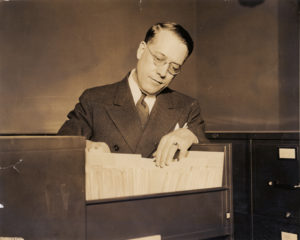
Using tax laws to bring down crime lords was a novel approach. Like Lewis and Clark, Irey was headed into uncharted territory. Capone paid cash for everything, kept no books and records in his name and had loyal minions secretly handling his financial affairs. Capone claimed he was a professional gambler on a losing streak. On paper, he appeared to be flat broke.
Going after Capone’s money trail undoubtedly would lead to the exposure of corrupt officials. Capone paid about 20 cents on every dollar he earned to graft. Capone made generous cash contributions to politicians. Irey could have stepped on big, influential toes — the toes of those who could have toppled his career or cut funding for his unit. The astute director of the FBI, J. Edgar Hoover, acknowledged the hazards of such investigations and avoided organized crime cases for decades.
To build cases on entrenched crime bosses, you first need intelligence on the inner workings of their organizations. That meant long-term undercover operations. Only the most experienced undercover agents would stand a chance blending in with hardened gangsters. At the time, Hoover would not take the risk of letting his FBI agents do such undercover work for fear they would succumb to the vices of the gangsters. However, Irey’s top undercover agent, Mike Malone, infiltrated the Capone organization and lived with Capone’s gang for more than a year without compromise.
Even if Irey’s team put together a prosecutable case there was still the demoralizing realization that Capone could bribe and intimidate the jury (which Capone later attempted). There was also the risk of an agent capitulating to a bribe. A corrupt prohibition agent could earn thousands of dollars by merely letting a truckload of whiskey pass by. Capone tried to bribe Irey with a million dollars, which he summarily declined.
In order to have a fighting chance, Irey needed a top-notch team of investigators skilled at following the money, unencumbered by fear and with unassailable integrity. The team would have to be so steadfastly loyal to the mission they would be willing to work excruciatingly long hours for months on end under dangerous conditions, ever motivated to follow the slightest financial lead.
Climactic resolution
On October 18, 1931, all the major newspapers gave front-page coverage to the conviction of Capone on tax evasion, making Irey and his T-Men instant folk heroes. The conviction was such a motivating factor that lines of mobsters formed at IRS offices to file tax returns. Tax collections in the Chicago area more than doubled.
Without a rest, Irey and his T-Men went to New York and took on infamous gangsters Waxey Gordon, Dutch Schultz and Capone’s mentor, Johnny Torrio. They applied their investigative prowess to the Huey Long Gang of Louisiana; Kansas City’s political boss Tom Pendergast; and Atlantic City’s Nucky Johnson, who was the inspiration for HBO’s Boardwalk Empire. Irey and his T-Men were bringing down so many crime bosses and corrupt officials they earned the nickname the Giant Killers. The T-Men even saved Hollywood by stopping Capone’s remaining gang, led by Frank Nitti, from controlling the motion picture industry.
Impressed with his leadership, U.S. Treasury Secretary Henry J. Morgenthau appointed Irey to be the coordinator of all Treasury law enforcement agencies, including the Secret Service, Customs, Bureau of Alcohol, Federal Bureau of Narcotics and Coast Guard criminal investigators. Life magazine stated, “64% of all peacetime criminals in federal prisons are there because of Elmer Irey and his T-Men.” The director of the Bureau of Prisons, James Bennett, called Irey “his best talent scout.”
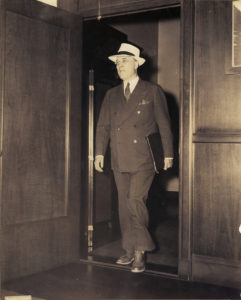
In 1942, when the nation was heavily reliant on income tax collections to fund World War II, President Franklin Roosevelt sent Irey a personal letter of appreciation on White House stationary, stating, “Over the years the Intelligence Unit has become not only a shiny mark of incorruptibility but also A-1 Service.”
In 1945, Westbrook Pegler, a popular conservative columnist who wrote extensively on professional sports scandals, was asked by the baseball industry what he thought of Irey as a candidate for the next baseball administrator. Pegler responded by saying he did not know what Irey knew about baseball but if Irey was not honest, “there weren’t no God.”
Irey served in a senior federal law enforcement position from 1919 to 1946, retiring because of a failing heart. Upon his retirement, Irey received numerous letters of praise from well-wishers, colleagues and former staff. The chairman of the Import Export Bank, William McChesney, wrote to Irey: “Your record as a public servant cannot be exceeded. It is without a blemish, and there has never been a scintilla of criticism directed against you notwithstanding the thousands of cases investigated and prosecuted under your personal direction.”
Homer Cummings, the U.S. attorney general under Roosevelt, wrote to Irey: “As you are aware, I have been familiar with your public service over a long period of time, and in my judgment no one has rendered more distinguished public service than you have.”
Marquis Child — the first to win a Pulitzer Prize for distinguished commentary — wrote Irey, “Your long and distinguished service is an occasion for pride not alone to your family and wide circle of friends but to everyone who believes in effective, honest government.”
Arguably, Irey was one of the most respected and accomplished law enforcement leaders in the history of the United States. So how did he do it?
The power of character
In his letter to Irey, U.S. Attorney and later federal Judge William T. McCarthy eloquently described the keys to Irey’s success. “The worth-while satisfaction, Elmer, that one can get out of public service can only be measured by the attributes of honesty, integrity, forbearance, sound judgment, patience, and charity, the latter attribute not misapplied, but exercised in conformity with the standards of simple justice. These attributes are a part of the Golden Treasury of life and you have been blessed by having them as your treasured possessions.” Simply put, McCarthy was telling Irey it was his character that underpinned his achievements.
Alf Oftedal — the agent who led the fight to save Hollywood — said in his letter to Irey: “Emerson has observed that men of character are the conscience of the society to which they belong. How true this is, as evidenced by your outstanding influence among special agents. They, quite naturally, considered it a great honor to have been selected for important duties under your direction.”
Those who embrace honesty, integrity, forbearance, sound judgment, patience, charity and “simple justice” are leaders of character. They lead by example and by doing so, foster a culture of character that inspires others to mirror their attributes. This is how Irey made his unit a “shiny mark of incorruptibility.”
Agent Tom Henry said in his letter to Irey: “Above all you have shown every man who has worked for or with you that true value of integrity, loyalty and sound common sense.” Agent E.C. Palmer wrote, “The Unit carries and will jealously safeguard the enduring stamp of your character and integrity.”
Leaders of character work toward a higher purpose than personal reward. They strive to be selfless, humble and never self-aggrandizing. Stephen Spingarn — the assistant general counsel for the Treasury who also served as special counsel to FDR and President Harry Truman — wrote Irey: “I have particularly admired the selflessness with which you have carried on your work, avoiding the notable opportunities which it might have afforded another sort of man for self-glorification, and concentrating only on doing the job.” Reading between the lines, the “another sort of man” Springarn may have alluded to was Hoover. When Springarn was the assistant attorney general, he worked closely with Hoover. By Hoover’s edict, every FBI press release bared only the name “J. Edger Hoover.” The FBI director reveled in the spotlight.
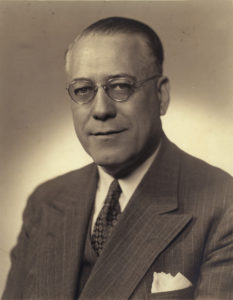
Leaders of character are not obstinate taskmasters. They understand the value of encouraging others to achieve “A-1 service.” Agent Muray Dengler said to Irey: “You drove your teams with an easy rein which gave them more confidence in themselves and made all of them give their best to you.” Paul Synder, one of the agents who brought down crime boss Nucky Johnson, told Irey, “On many occasions your confidence in our ultimate success represented the only incentive to continue in the face of obstacles which appeared insurmountable.”
However, Irey was not a pushover unwilling to give stern direction. Agent Donald Bircher wrote: “I pleasantly recall the trying days in the investigation of the New Orleans cases when we all sat around on a bed in a hot, stuffy hotel room and you really grilled me as to progress being made in the Governor O.K. Allen case. Your pointed questions and comments spurred us to our best efforts and effectively guided me in all of my subsequent investigations.”
Leaders of character care for their people. In a group letter to Irey signed by six members of the secretarial pool, they told him, “Not one of us can recall a day when you weren’t always willing to lend a helping hand; nor can we recall that you have ever been anything but our smiling Mr. Irey.” Former agent and U.S. Director of Procurement Clifford Mack perhaps best summed up Irey’s compassion for his people. “I have always had a very pleasant recollection of the number of young folks who stopped by to visit with you and I noticed particularly that they invariably called you, ‘Uncle Elmer.’ I soon learned it was an expression of close friendship and desire to feel free to discuss their personal problems with you.”
Out of a sense of fairness, leaders of character ensure their people are credited justly for their hard work. James Olive — one of the agents on the Capone case — told Irey: “Few men can look back upon achievements comparable to yours. Fewer still can do so with the satisfying realization that they gave full credit to all members of their organization who had a part in those achievements.” To Irey, this was just “simple justice.”
Indeed, character alone will not give you complete competence. Like Hoover, Irey was a brilliant administrator with attention to detail and political savvy. But business acumen alone will not breed the fierce loyalty Irey enjoyed. In his letter to the retiring Irey, Mike Malone — the undercover agent who gained the confidence of Capone and his henchmen — summed up the deep indebtedness many felt toward Irey: “Please do not hestitate to call upon me if I can be of service to you or your family at any time.”
Irey’s inspiration
Irey was not shy about who his inspiration was: the person who emancipated the slaves and successfully fought to hold the Union together, President Abraham Lincoln. According to Irey’s granddaughter, Irey’s home was filled with pictures of Lincoln. He even handed out pictures of Lincoln to his staff to inspire others. When Life magazine came to photograph Irey for an article on his retirement, Irey deliberately posed next to several pictures of Lincoln that adorned his office.
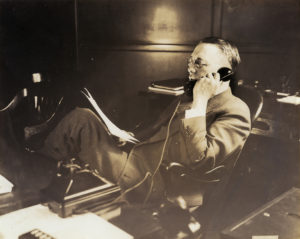
Lincoln said, “No man is good enough to govern another man without the other’s consent.” Through his unwavering character, Irey earned the consent to lead others. Lincoln also said, “Nearly all men can stand adversity, but if you want to test a man’s character, give him power.” Irey was given the immense power to topple giants. However, he never abused it to build an empire, destroy his enemies or seek glorification. Instead, he judicially and fairly worked for a greater cause, which was the betterment of the nation. As Dwight Green, the governor of Illinois and former Capone prosecutor, put it, “I feel that the people of our country owe you a great debt of gratitude.”
The power of Irey’s character played a critical role in dissipating the culture of corruption and lawlessness that plagued the country during the 1920s. The Greek philosopher Heraclitus said, “Character is destiny.” Heraclitus believed — and history continually bears this out — that your destiny is not so much predetermined by fate but more so your character.
If you choose to be a leader of character, you will define your leadership success. Your character is your destiny. However, character is not easily manifested overnight. It takes constant diligence to maintain. Doing the right thing sometimes is a lot more effort than the easy way out. But thanks to Irey we have a motivating tale of success. Who would have thought a tale involving gangsters would include such a great leadership lesson?
In 1978, the Intelligence Unit evolved into the IRS Criminal Investigation Division, which continued to bring down mobsters, corrupt politicians and others who scheme to skirt the nation’s tax laws. In 2019, the agency will recognize its 100th year of law enforcement service and celebrate a record of achievement built on the rock-solid foundation built by Elmer Irey.
Paul Camacho, former special agent in charge of the Las Vegas office of IRS Criminal Investigation and a member of the Board of Directors of The Mob Museum, is vice president of AML compliance for Station Casinos. Contact him on Twitter @vegastaxman.
Note: The original copies of the retirement letters cited in this essay are in the archives of The Mob Museum.
Feedback or questions? Email blog@themobmuseum.org





